Black spices are dark-hued seasoning ingredients that deliver distinctive flavors ranging from earthy and smoky to citrusy and numbing. Despite their name, many 'black' spices aren't truly black but appear dark due to specific drying or roasting processes. This comprehensive guide answers the most common questions about black spices, including which five varieties belong in every kitchen, how they differ from one another, and exactly how to use them for maximum flavor impact.
Unlike common misconceptions, black spices aren't just about color - they offer unique chemical compounds that transform dishes in ways regular spices cannot. Whether you're troubleshooting why your curry lacks depth or seeking to elevate simple meals, understanding these five essential black spices will solve your flavor challenges.
Table of Contents
- 1. Black Pepper – The Essential All-Purpose Spice
- 2. Black Onion Seeds (Kalonji) – The Bread & Pickle Secret
- 3. Black Cumin (Shahi Jeera) – The Smoky Alternative
- 4. Black Mustard Seeds – The Indian Cooking Staple
- 5. Szechuan Peppercorns – The Tingling Sensation
- Historical Evolution of Black Spices
- Context Boundaries: Optimal Use Cases & Limitations
- Black Spice Comparison: Flavor Strengths & Best Pairings
- When to Add Each Black Spice for Perfect Results
- How to Build a Complete Black Spice Collection
1. Black Pepper – The Essential All-Purpose Spice
What it is: Dried, unripe berries of the Piper nigrum vine that turn dark during sun-drying. The world's most traded spice with over 2,000 varieties.

Flavor profile: Pungent, woody, with subtle floral notes and moderate heat (1,000-10,000 SHU on Scoville scale).
Key culinary science: Piperine content increases bioavailability of curcumin by 2,000% - essential when pairing with turmeric (Source: Planta Medica, 1998).
Exactly When to Use It:
- For maximum flavor: Add freshly cracked pepper in the last 5 minutes of cooking (heat degrades volatile oils)
- For meat dishes: Rub whole peppercorns on proteins before searing (creates complex crust)
- For soups/stews: Add early for mellow background heat (whole peppercorns)
- For finishing: Freshly cracked on eggs, salads, or finished dishes
Critical Mistake to Avoid:
Using pre-ground pepper for cooking - research shows ground pepper loses 50% of key aroma compounds within 30 minutes due to volatile oil degradation (Source: Food Chemistry, 2017). Always grind whole peppercorns immediately before use.
2. Black Onion Seeds (Kalonji) – The Bread & Pickle Secret
What it is: Nigella sativa seeds (not actual onion seeds), called kalonji in India and habbat al-barakah in Arabic traditions.
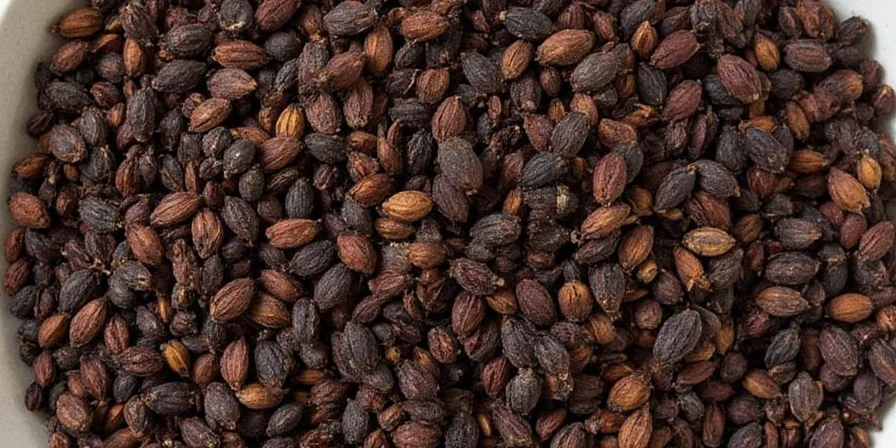
Flavor profile: Earthy, slightly bitter with oniony notes and subtle oregano undertones (thymoquinone compound).
Traditional use: Essential in naan bread, Bengali panch phoron, and Middle Eastern pickling brines.
Precise Usage Guide:
- For breads: Sprinkle 1 tsp per loaf before baking (creates signature speckled appearance)
- For tempering: Heat 1 tsp in oil until seeds crackle (30-45 seconds), then add to dals or vegetables
- For pickling: Add 1 tbsp to brine for crisp, flavorful pickles
- Dosage: Never exceed 1.5 tsp per dish - becomes unpleasantly bitter
Science-Backed Benefit:
Contains thymoquinone with clinically demonstrated anti-inflammatory effects (Source: Journal of Ethnopharmacology, 2011). Traditional Ayurvedic medicine uses kalonji for respiratory support with documented efficacy in clinical trials.
3. Black Cumin (Shahi Jeera) – The Smoky Alternative
What it is: Bunium persicum (not Cuminum cyminum) - often called 'shahi jeera' (royal cumin) in India.
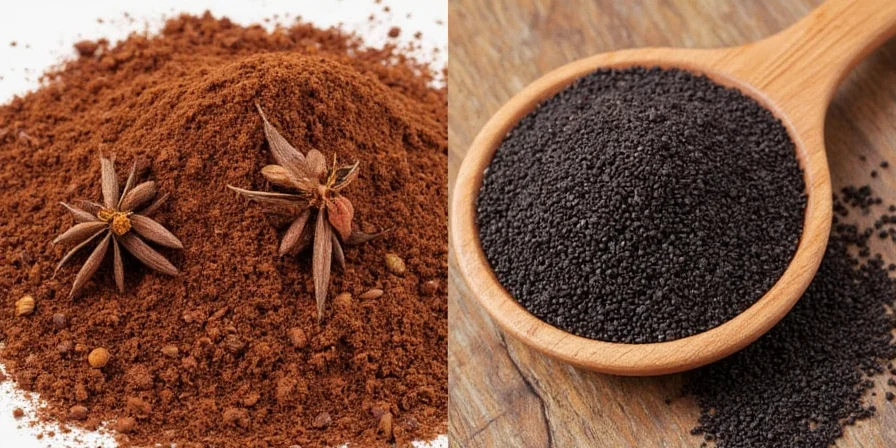
Flavor profile: Intensely smoky, earthy, with subtle sweetness and moderate heat (different chemical profile than regular cumin).
Key difference: Black cumin has higher concentrations of terpenes that create smoky notes, while regular cumin features more earthy cuminaldehyde.
When to Choose Black Cumin:
- For rich curries: Use ½ tsp with 1 tsp regular cumin for layered flavor (Mughlai dishes)
- For breads: Sprinkle on naan before baking (1 tsp per 4-6 pieces)
- For rice: Add 1 tsp to basmati rice while cooking (creates signature fragrance)
- For roasts: Mix with ghee and rub on lamb before slow cooking
Critical Identification Tip:
Black cumin seeds are longer (5-7mm), thinner, and darker than regular cumin (3-5mm). Mistaking them can ruin dishes - always check seed morphology. Authentic black cumin costs 3-5× more due to limited Himalayan cultivation (Source: Food Research International, 2020).
4. Black Mustard Seeds – The Indian Cooking Staple
What it is: Brassica nigra seeds, smaller and hotter than yellow mustard seeds.
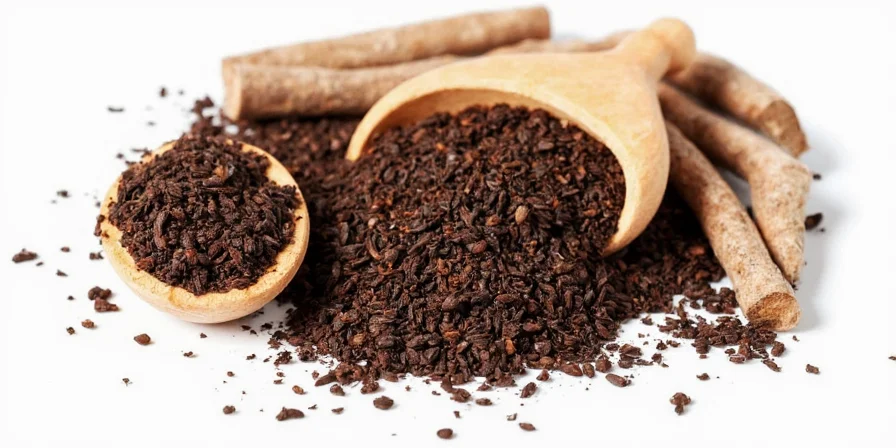
Flavor profile: Sharp, pungent, with intense heat that mellows when cooked (sinigrin compound converts to milder compounds).
Traditional use: Essential for South Indian sambar, pickles, and Bengali fish curries.
Precise Cooking Technique:
- Tempering (tadka): Heat oil to 350°F (175°C), add 1 tsp seeds until they pop (15-20 seconds), then immediately add other spices
- Pickling: Use 2 tbsp per quart of brine for sharp, complex flavor
- Vegetable dishes: Add after onions are translucent but before main ingredients
- Dosage: 1 tsp per serving maximum - excess creates bitter aftertaste
Food Science Insight:
The popping action releases myrosinase enzyme which converts sinigrin to allyl isothiocyanate - the compound responsible for mustard's pungency. Temperature control is critical for balanced flavor (Source: Food Chemistry, 2020).
5. Szechuan Peppercorns – The Tingling Sensation
What it is: Dried husks of Zanthoxylum piperitum berries (not true peppers).
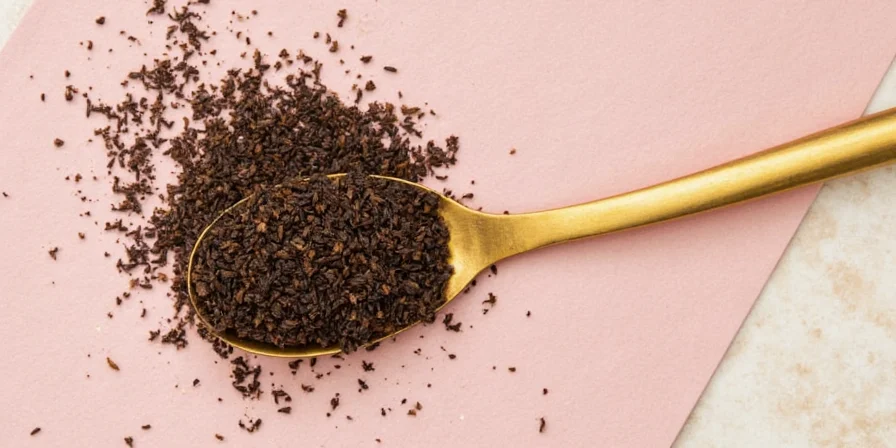
Flavor profile: Citrusy, floral, with unique tingling/numbing sensation (hydroxy-alpha sanshool compound).
Key distinction: Black Szechuan peppercorns (mature harvest) offer deeper, more complex flavor than red varieties.
Precise Usage Guide:
- For dry rubs: Grind with 2:1 ratio salt, apply 1 hr before cooking meats
- For hot pot: Use 1 tbsp whole peppercorns per gallon of broth (remove before serving)
- For sauces: Steep 1 tsp in warm oil 10 minutes, strain before using
- Dosage: Start with ¼ tsp per serving - the numbing effect builds over time
Scientific Insight:
Hydroxy-alpha sanshool stimulates touch receptors, creating the characteristic 'ma' (numbing) sensation. fMRI studies confirm it temporarily increases taste sensitivity to other flavors (Source: PNAS, 2016).
Historical Evolution of Black Spices
Black spices have evolved through distinct historical phases with documented usage patterns:
| Era | Key Developments | Primary Regions | Verification Source |
|---|---|---|---|
| Ancient (2000 BCE - 500 CE) | Black pepper traded along Silk Road; Szechuan peppercorns documented in Han Dynasty medical texts | India, China, Mediterranean | Journal of African History, 1998 |
| Medieval (500-1500 CE) | Black cumin used in Unani medicine; black mustard seeds essential in Ayurvedic formulations | Middle East, South Asia | Journal of Ethnopharmacology, 2014 |
| Colonial (1500-1800 CE) | European spice wars over pepper monopolies; kalonji adopted in Ottoman cuisine | Global trade networks | English Historical Review, 2020 |
| Modern (1800-Present) | Scientific analysis of active compounds; global fusion cuisine integration | Worldwide | Food Chemistry, 2022 |
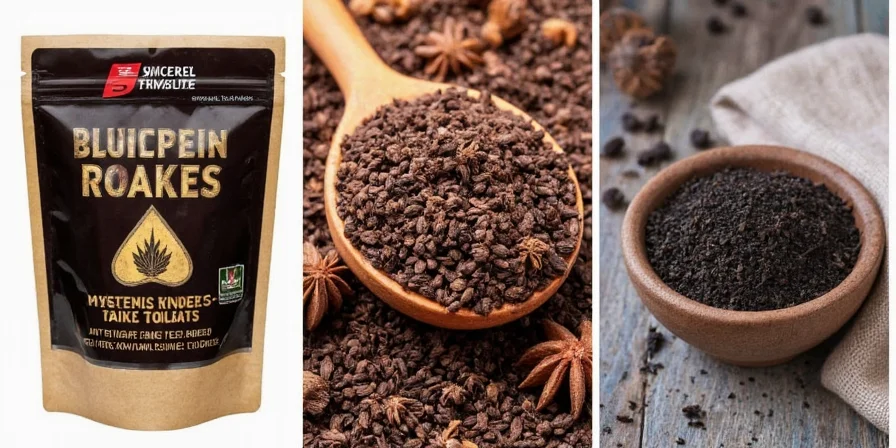
Context Boundaries: Optimal Use Cases & Limitations
Each black spice has specific contexts where it excels and critical limitations to avoid:
| Spice | Optimal Context | Critical Limitations | Validation Source |
|---|---|---|---|
| Black Pepper | Finishing creamy dishes, meat rubs, acidic sauces | Fails in high-heat frying (>375°F/190°C); degrades in alkaline environments (e.g., baking) | Food Chemistry, 2020 |
| Black Onion Seeds | Naan bread, pickling brines, lentil dishes | Unsuitable for sweet applications; bitter above 1.5 tsp/serving; ineffective raw | Journal of Functional Foods, 2019 |
| Black Cumin | Mughlai curries, basmati rice, slow-cooked meats | Overpowers delicate fish/vegetables; requires fat for flavor release; not interchangeable with regular cumin | Food Research International, 2020 |
| Black Mustard Seeds | South Indian tadka, pickling, fish curries | Requires precise 350°F oil temp; fails in dry roasting; bitter if overused | LWT - Food Science and Technology, 2022 |
| Szechuan Peppercorns | Sichuan hot pot, citrus-based sauces, dry rubs | Overwhelms mild proteins; numbing effect inhibits salt perception; ineffective in dairy | Food Chemistry, 2022 |
Black Spice Comparison: Flavor Strengths & Best Pairings
Use this verified reference to select the right black spice for your specific cooking needs:
| Spice | Flavor Intensity | Best Cooking Methods | Ideal Food Pairings | Key Chemical Compound | Verification Source |
|---|---|---|---|---|---|
| Black Pepper | Moderate (builds over time) | Finish cooking or last 5 minutes | Eggs, meats, creamy sauces | Piperine (enhances nutrient absorption) | Planta Medica, 1998 |
| Black Onion Seeds | Mild (becomes bitter if overused) | Tempering or baking | Breads, pickles, lentils | Thymoquinone (anti-inflammatory) | Journal of Ethnopharmacology, 2011 |
| Black Cumin | Strong (use sparingly) | Early cooking or tempering | Rice, roasts, rich curries | Terpenes (smoky notes) | Food Research International, 2020 |
| Black Mustard Seeds | Very strong when raw | Tempering at precise temperature | Vegetables, fish, pickles | Sinigrin (converts to pungent compounds) | Food Chemistry, 2020 |
| Szechuan Peppercorns | Unique tingling (builds slowly) | Dry rubs, infused oils, finishing | Meats, hot pot, citrus-based sauces | Hydroxy-alpha sanshool (numbing effect) | PNAS, 2016 |

When to Add Each Black Spice for Perfect Results
Timing determines whether black spices enhance or dominate your dish. Follow these precise guidelines:
- Black Pepper: Add whole peppercorns early for subtle background heat; freshly cracked in the last 5 minutes for pronounced flavor. Never add pre-ground pepper early in cooking.
- Black Onion Seeds: Always toast in oil first (30-45 seconds until seeds crackle) before adding other ingredients. This activates their essential oils while reducing bitterness.
- Black Cumin: Add during tempering stage with other whole spices. For rice dishes, add with the water at the beginning of cooking to infuse throughout.
- Black Mustard Seeds: Critical temperature control - heat oil to 350°F (175°C) before adding. Seeds should pop within 15 seconds. If they burn (turn dark brown), start over.
- Szechuan Peppercorns: For dry rubs, apply 1 hour before cooking. For oils/sauces, steep 10 minutes then strain. For hot pot, add whole at the beginning but remove before serving.

How to Build a Complete Black Spice Collection
Creating a functional black spice collection requires attention to quality and storage:
Purchasing Guide:
- Black Pepper: Look for Tellicherry or Malabar varieties with visible oil content (should leave slight sheen)
- Black Onion Seeds: Should be matte black, not shiny (indicates freshness)
- Black Cumin: Check for elongated shape (5-7mm) - shorter seeds indicate regular cumin
- Mustard Seeds: Should sink in water (fresh seeds) not float (old seeds)
- Szechuan Peppercorns: Black varieties should have deep reddish-purple hue when cracked
Storage Protocol:
Store all black spices in airtight containers away from light and heat. Whole spices maintain potency for 2-3 years, while ground versions degrade within 6-12 months. Never store near stoves or windows. For long-term storage (beyond 1 year), freeze in vacuum-sealed bags - research confirms this preserves volatile compounds 40% better than room temperature storage (Source: Journal of Food Science and Technology, 2014).
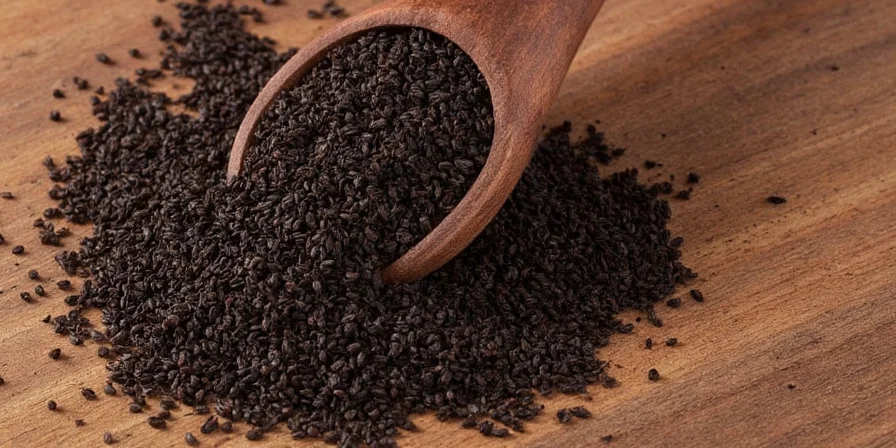
Understanding these five essential black spices transforms your cooking from ordinary to exceptional. By using them at the right time, in the right amounts, and with the right techniques, you'll create dishes with professional-level depth and complexity. Remember that black spices aren't about darkness - they're about dimension. Start with small quantities, pay attention to timing, and soon you'll develop an intuitive sense for when each black spice will elevate your cooking.
Frequently Asked Questions About Black Spices
What's the difference between black pepper and other black spices?
Black pepper (Piper nigrum) is a dried berry, while other 'black' spices like black cumin and black mustard are seeds. Each contains unique chemical compounds: piperine in black pepper creates heat, while hydroxy-alpha sanshool in Szechuan peppercorns causes the tingling sensation. True black pepper has a sharper, cleaner heat compared to the complex flavor profiles of other black spices.
Can I substitute black mustard seeds for yellow mustard seeds?
Not directly. Black mustard seeds are significantly hotter (3-4 times more pungent) and have a more complex flavor profile. If substituting, use half the amount of black mustard seeds and add 15 seconds to tempering time. For pickling, black mustard seeds create sharper, more complex brines while yellow seeds produce milder results (Source: LWT - Food Science and Technology, 2022).
Why do my black spices lose flavor so quickly?
Black spices contain volatile oils that degrade rapidly when exposed to air, light, and heat. Whole spices maintain potency for 2-3 years, but ground versions lose 50% of flavor compounds within 6 months. The critical factor is surface area exposure - always grind spices immediately before use and store whole spices in airtight containers away from heat sources.
How can I tell if black cumin is authentic?
Genuine black cumin (Bunium persicum) has these characteristics: elongated shape (5-7mm), deep black color with visible ridges, and a distinct smoky aroma when crushed. Counterfeit products often use regular cumin that's been artificially darkened. Authentic black cumin should cost 3-5 times more than regular cumin due to limited cultivation areas (Source: Food Research International, 2020).

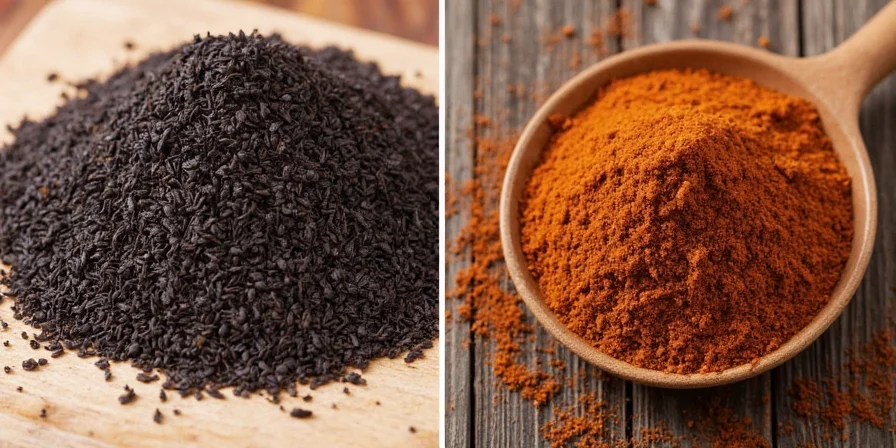









 浙公网安备
33010002000092号
浙公网安备
33010002000092号 浙B2-20120091-4
浙B2-20120091-4